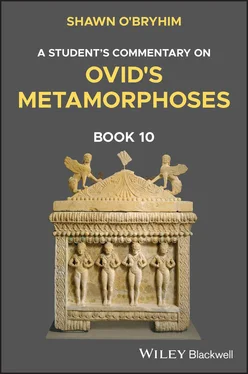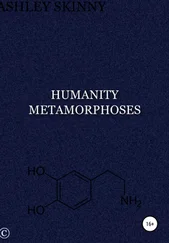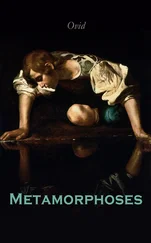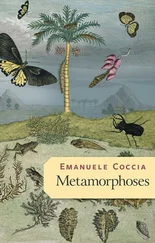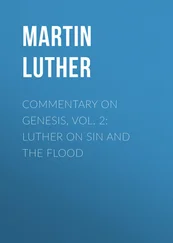Ovid was never allowed to return to Rome. He was forced to remain in Tomis, over eight hundred miles from his home, writing poetry when he could, trying to learn the native language, and even strapping on armor to ward off the neighboring tribes ( Tristia 5.10). He died in the ninth year of his exile, during the winter of AD 17/18, at the age of 60.
Ovid describes Amoresas a work of his youth ( Tristia 4.10.57–58). It originally consisted of five books; a revision reduced it to three, which is the version that has survived. At Amores 1.1–4, Ovid says that he had intended to write an epic poem on a military topic. Indeed, the first line begins with the word arma , as does Vergil’s Aeneid . Cupid, however, stole a foot from every other line, thereby transforming an epic poem in dactylic hexameter into a collection of love poems in elegiac couplets. When Ovid complains that he should not be writing love poetry because he has never been in love, Cupid responds by shooting him with an arrow, thereby transforming him into a lover. The object of his desire is a woman named Corinna, whose identity was not known to Ovid’s contemporaries or to later writers ( Ars amatoria 3.53–58; Apuleius, Apologia 10.2). This suggests either that “Corinna” is a pseudonym for an unidentified woman or that the character who bears this name is fictional ( Tristia 4.10.59–60). Ovid’s Amores takes a light-hearted look at the vicissitudes of love and contains many of the tropes and characters found both in previous love poets and in New Comedy.
Heroidesconsists of verse letters in elegiac couplets written by the heroines of myth to their husbands, lovers, and potential lovers. Focused on character exposition and persuasion, these poems owe much to Ovid’s education in rhetoric, and particularly to the tradition of suasoriae , “speeches of persuasion” (Seneca, Controversiae 2.2.8). They also involve prosopopoeia or ethopoeia (“character drawing”), a rhetorical exercise in which speeches are composed that portray the characteristics of famous individuals (Quintilian 3.8.52). While Ovid claims that Heroides represents an entirely new genre ( Ars amatoria 3.346), the pieces in this collection are reminiscent of speeches from Euripidean tragedy and may have been inspired by a fictional letter in Propertius 4.3. Poems 1–15 appear to be youthful compositions in the personae of individual female characters, while poems 16–21 – the “double heroides ,” in which letters from heroines are answered by their male addressees – come from a later period. These poems take possibilities left open by earlier authors as their jumping-off point (e.g. a letter that Penelope could have written after her interview with Odysseus in the guise of a beggar). Ovid’s use of varied source material allows for new perspectives on familiar tales, while his refashioning of his sources into something unique foreshadows his compositional technique in Metamorphoses .
Ars amatoriais a didactic poem in three books. Here Ovid plays the role of “teacher of love” ( praeceptor amoris ). The first two books teach men how to find and obtain lovers; the third does the same for women. While previous didactic poems were written in dactylic hexameter, Ovid uses elegiac couplets, a meter that is more appropriate to his erotic theme in that it is traditionally associated with love poetry. His advice does not have romance as its primary objective, but is geared toward achieving intercourse through various methods of seduction. After careful study of this poem and the application of its advice, Ovid’s readers, unlike the lovers depicted by previous elegiac poets, will be able to control love rather than allow it to control them. In spite of (disingenuous) disclaimers that this poem is not intended for respectable women (1.31–34, 2.599–600, 3.57–58, 3.483–484, 3.613–616), Augustus used it as a pretext for Ovid’s exile. In Remedia amoris, Ovid plays the role of the “doctor of love” who cures his love-sick patients by teaching them how to overcome passion and thereby extricate themselves from romantic relationships.
A second didactic poem, Medicamina faciei feminae, is a fragment of a longer work that Ovid describes as parvus ( Ars amatoria 3.206). The passage that survives, which justifies the use of makeup and provides recipes for it, originally stood at the beginning of the poem. It is unclear whether this was a serious guidebook to cosmetics, a parody of didactic works, or Ovid’s attempt to demonstrate his virtuosity as a poet by taking on an unpromising topic.
Fastiis a didactic poem on the Roman calendar in elegiac couplets. It focuses on myths and festivals, but also includes information on astronomy and on Augustus and his family. The broad learning that it contains is reminiscent of the scholarship of the Hellenistic period, particularly Callimachus’ Aetia . Six books (January through June) were completed before Ovid’s exile and were subsequently revised. It appears that books on the remaining six months were not written.
Ovid continued to write even after his exile. Tristiaand Epistulae ex Pontoare elegiac poems addressed primarily to his wife and to anonymous individuals in Rome. The poems addressed to Augustus are pleas for a commutation of his sentence. Others are bleak descriptions of his new home and sorrowful reflections on his past, present, and future.
Ibis, which was modeled on a poem of the same name by Callimachus, is an invective in elegiac couplets instead of the iambics traditionally associated with this genre. In it, Ovid rails against an anonymous enemy who is trying to damage his reputation in Rome during his exile. This poem is replete with references to punishments inflicted on mythic figures that Ovid wishes upon his adversary. Here the unwarlike poet of love transforms himself into a soldier who threatens violence against his enemy through verse. Because Ovid cannot carry out his vengeance from Tomis, Ibis expresses his frustration with the situation in which he finds himself: helpless, in the middle of nowhere. In the end, however, the extreme punishments that he conjures up for his enemy are so ridiculous that the poem devolves into humor.
There are references to other works that have not survived. Quintilian (10.1.98) holds up the tragedy Medeaas an example of Ovid’s unrealized potential. This is his only work that is not in elegiac couplets or in dactylic hexameter. There was also a translation of Aratus’ Phaenomena , a poem on the stars. Ovid refers in Ex Ponto (1.2.131, 1.7.30, 3.4, 4.6.17, 4.9.131) to occasional poems that would have focused on particular events. One of these was in Gaetic, the language spoken in Tomis (4.13.19–36).
With Metamorphoses , Ovid exchanges the elegiac couplets of his love poetry for the dactylic hexameter of epic. Superficially, this poem fits the broad definition of an epic: it is in the traditional meter of epic (dactylic hexameter), it is a long work (15 books), and its main characters are gods and heroes. But Ovid departs from this definition in fundamental ways. While Metamorphoses is a carmen perpetuum (“continuous poem,” 1.4) that begins with the creation of the earth and ends in Ovid’s time, it is not a long story on one topic, like the Iliad or the Aeneid . Instead, it is a collection of shorter stories, some of which occupy a fraction of a book, while others are so long that they are categorized as epyllia (“mini-epics”). These tales are bound together not so much by chronology as by devices such as family relationships or similarities between metamorphoses, and these provide a segue from one story to the next. Not all the myths are about heroes; the story of Arachne, for example, is about a talented woman of the lower class. Moreover, Ovid incorporates nearly every imaginable genre into this work: epyllion , tragedy, comedy, rhetoric, hymn, erotic poetry, pastoral poetry, historical myth, and philosophy (Lafaye 1904: 141–159). Metamorphoses may be an epic poem, but it does not fit the traditional definition of an epic.
Читать дальше
